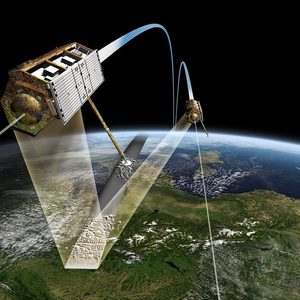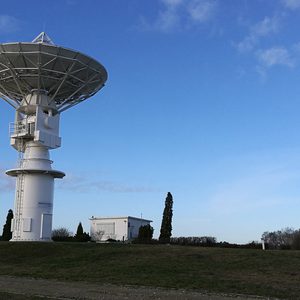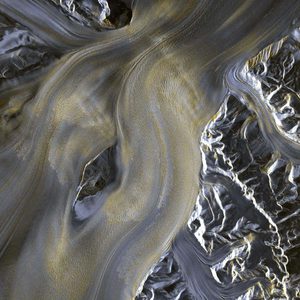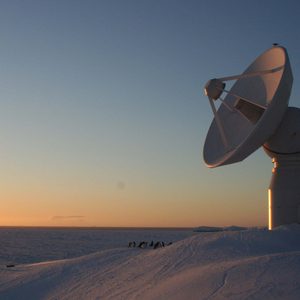German Aerospace Center (DLR)
Secure archiving of satellite data
DLR complements its archive with the Silent Brick System from FAST LTA
KOMPLETTEN BERICHT HERUNTERLADEN (PDF)The German Aerospace Center (DLR), the research center of Germany, provides research and development work for aviation, aerospace, energy, transport, security and digitization. In addition to its own research activities, DLR, as a space agency on behalf of the Federal Government, is responsible for the planning and implementation of German space activities. The Earth Observation Center (EOC) is located in Oberpfaffenhofen, west of Munich. Here, research is conducted in the field of remote sensing and answers are sought to urgent questions in the areas of environment and climate, mobility and planning, prevention and management of natural disasters and civil security. Part of the EOC is the German Satellite Data Archive (D-SDA). The receiving stations for satellite data, which are distributed worldwide, forward their data to this location, where they are secured and archived on a long-term basis. The data of the rapidly growing archive, currently about 20 petabytes in size, is stored with an upstream hard disk cache via a hierarchical storage management system. The two copies of the data must be based on different technologies. Since one of the two tape technologies used so far was discontinued by the manufacturer, DLR decided to evaluate FAST LTA‘s Silent Brick System in a pilot project. In addition to the required media break, Silent Bricks also offer considerable speed advantages.
The German Satellite Data Archive (D-SDA) is the core component of numerous national and international space missions of earth observation. It has been operated in this form since the mid-1990s. Various satellites, which produce data using optical methods, X-ray technology, spectrography and radar, provide scientists with the basis for their research. For example, the changes in all the world‘s glaciers over the past 30 to 40 years can be precisely tracked. These data are also used for economic applications, urban planning, agriculture and forestry or for environmental impact assessment. Accordingly, the D-SDA has extensive experience in archiving large amounts of data. Stephan Schropp as IT manager and several colleagues are responsible for the conception, the optimal setup, and the adaptation of the archiving environment.
7 years of data collection – preservation for eternity
The satellites are designed for 7 years of use, during which time they orbit the earth. During this time – and often a few years longer – they collect their data and send it regularly to the D-SDA. The long-term archiving of the satellite data is intended to be for as long as possible to enable the evaluation of past data for future challenges. The data management is carried out with an in-house software. Initially, the data is stored in a hard disk cache; it is then archived redundantly on two different tape technologies and locations to minimize the risk of data loss. Up to now, in addition to tape systems based on LTO6/7, the Oracle StorageTek STK T10000 solution, which is also based on tape, has been used. However, the latter is no longer being developed further. „We have been observing a change in the market for some time now. In the tape sector, the range of products offered by various drive manufacturers has been greatly reduced in recent years, so that a dual-vendor strategy, which is common practice in long-term archiving, can no longer easily be sustained,“ explains Stephan Schropp. „For certain data from current missions, a lower latency must also be achieved when reading data,“ says Stephan Schropp. New types of virtual tape libraries can be the solution for the transition from the legacy archive media.
Silent Brick System enables faster access compared to tape
On the recommendation of the experts from the system integrator NAVUM GmbH in Wörthsee near Munich, who have been supporting DLR in the administration of the archive for many years, the decision was made to use the Silent Brick System from FAST LTA. „This allows us to maintain our ‚dual vendor strategy‘“, says IT Manager Schropp. The Silent Bricks can be operated as a virtual tape library (VTL). This allows integration into existing archive software without major adaptations. „Thanks to FAST LTA‘s hard disk-based technology, we can eliminate the need for another, faster copy on hard disks,“ says Stephan Schropp happily. This was previously necessary to ensure timely access to archive data, but could only be implemented for a small portion of the data due to the higher price and energy consumption. However, fast, random access to more and more data is becoming increasingly important for future applications. This requirement can now already be met with the FAST LTA solution. By switching off inactive Silent Bricks, access times typical for hard disks can be achieved with low energy consumption; the energy balance is thus comparable to that of a tape archive. „Compared to the previous solution, we were able to detect significantly lower latencies when reading data from the archive,“ explains Stephan Schropp, with a view to previous experience. The integration of the first Silent Brick systems took place without interruption of productive operations in January 2019 at the DLR sites in Oberpfaffenhofen and Neustrelitz. „The 3 systems have been running smoothly and reliably ever since. It is a well suited solution for us“, explains Stephan Schropp satisfied.
10 PB growth per year
„We expect data growth of up to 10 petabytes per year from current and upcoming satellite missions,“ says Schropp. In the future, it is planned to integrate technologies such as Silent Bricks as an integral part of the archiving strategy, thus making DLR‘s satellite data available to research and industry in a future-proof manner. To this end, DLR and NAVUM are working with FAST LTA on the further development of the Silent Brick System and a new storage system designed especially for very large VTL archives.







